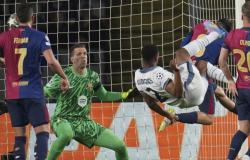
The Padel, a booming racket Sport, has established itself in a few years in the French sports landscape. Popularized by its accessibility and its playful character, it saw its number of land grow exponentially according to Padelonomics.com a site animated by Romain Taupin. This dynamic, at first glance positive, however masks many drifts: disorderly multiplication of projects, lack of concerted development strategy, increasing competitive tensions between public and private actors. Does the case of the Padel illustrate a failed meeting? that of a shared vision of the development of an activity.
A multitudes of private and public initiatives
The development of the padel in France is based on multiple actors:
- Tennis clubs, which add land to their sports offer, often helped by municipal subsidies.
- The local authorities, which build public land, whether they operate directly or entrust them to the clubs.
- Private operators, who invest in commercial padel complexes, without public help most of the time.
This diversity could have been a force if it had been carried by a common strategy. In the absence of clear orientations, it generates a juxtaposition of sometimes competing initiatives, without overall vision on territorial needs, the potential saturation of local markets or complementarity between associative sector and market sector. We could have dreamed of taking advantage of this attractiveness to think about a new model of sports equipment around racket sports for example, with a real inter -federal strategy…. We could have revised …
PADEL A public service activity or a commercial activity?
The Padel can fall under public sports service. Yes if
- It is proposed by a community within the framework of its “sport competence”;
- It aims for a general interest: access to sport for all, animation of the territory, health sport, …
- It is integrated into existing public equipment (example: shorts built in a municipal sports complex, managed directly or via a public service delegation, or a public domain occupation agreement with a club).
In this context, even if the practice is paying, it remains considered as a public service mission, because of local public initiative.
In addition, should be remembered that the decree of December 12, 2024 relating to the recognition of the high level character of sports disciplines list by federations the disciplines of HN quotes the padel in the disciplines delegated to the FF Tennis.
But the padel is often operated as a commercial activity:
- Portage by private companies or for -profit associative clubs;
- Economic model based on the time rental of land, subscriptions, the organization of events or private tournaments without recourse to public subsidies, and the prices of practice fixed freely according to demand.
In these cases, the activity is clear from the competitive and merchant sector, just like a squash or a bowling alley.
The risks of unfair competition
One of the perverse effects of this absence of piloting lies in the appearance of situations of unfair competition:
- local authorities which build and directly use courts or entrust them to tennis clubs
- Subsidized sports clubs (by communities and by the year National Sport Agency sometimes) offering paid access to the public, thus entering direct competition with private operators.
- Private operators sometimes confronted with municipal or associative equipment benefiting from public aid, but targeting the same customers
Competition accelerated by the year and the FFT which through the 1000 Padel tracks plan support with subsidies the development of tracks.
-Certainly today the market is exploding but for how long. Let us remember that in Sweden the Padels are dismantled! • Jul 03, 2023 Why does Sweden dismantle its Padel courts?
In this context, public intervention is likely to discourage private initiative in certain territories, even to put in difficulty certain existing projects.
On the merits, public intervention questions the respect of European and national rules in terms of competition, state aid and market distortion.
Sports clubs: a hybrid model in search of positioning
At the heart of this problem is the question of the role of sports clubs. Traditionally dedicated to associative animation and the training of licensees, certain clubs, including tennis, now adopt almost commercial logics to make their padel land profitable. They widely open their facilities to the general public, practice hourly prices, organize commercial events.
This progressive tilting of an associative logic towards an economic logic takes place in a legal vacuum:
- Which taxation to apply?
- What criteria to maintain or not public subsidies?
- What articulation with the commercial sector?
We will talk about it on May 14 of course. But it is urgent to rethink the public sport service.
In the case of the Padel one would have thought that the years on debate, it which brings together all the actors State, communities, sports movement private sector. Was the slogan of the year not better to do together. A new failed meeting for the National Sports Agency after the 5000 equipment plan, the Sport Pass…. ?
Padel, is indicative of still immature sporting governance, unable to anticipate the systemic effects of its choices
Padel is indicative of still immature sporting governance, unable to anticipate the systemic effects of its choices. At a time when public resources are scarce and when tensions between associative sector and merchant sector are increasing, learning the lessons from this failed meeting would be necessary
#EGS2025 Estates General of Sport are essential.







